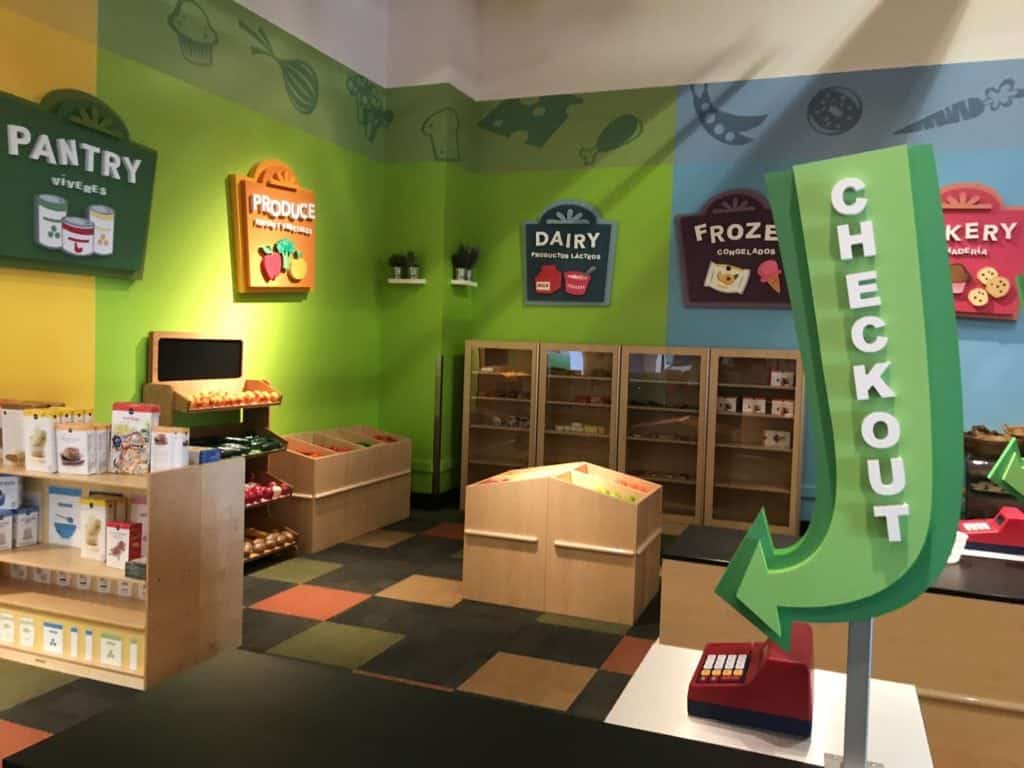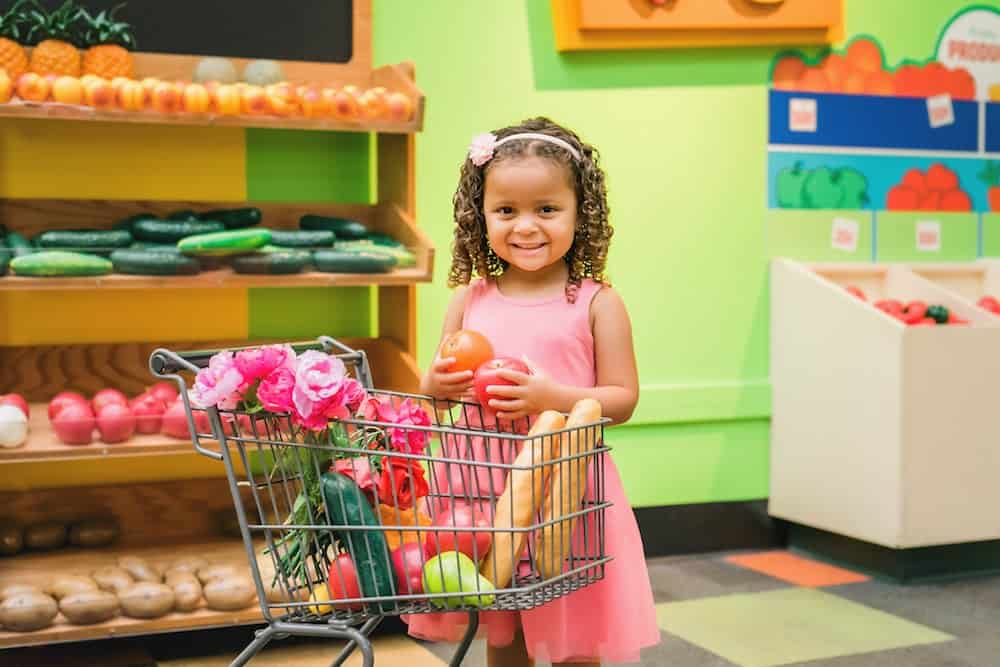Brain-Building Play: Publix at Glazer Children’s Museum
Publix at Glazer Children’s Museum, where shopping is brain-building play
Publix is one of the most-loved exhibits at the Glazer Children’s Museum, where kids enjoy filling their carts with groceries, working at the register and baking in the bakery. But the experience of playing in the Publix exhibit goes far beyond the fun. While kids shop, serious brain-building play happens beneath the surface.
At the grocery store and in the Publix exhibit, kids learn about nutrition and the variety of foods that can make up a well-balanced diet. Grocery shopping helps teach planning and big-picture thinking. At the museum, we like to challenge kids to plan a family meal, shop for a picnic or prepare for a party. Parents can try this activity with their kids next time they are shopping together. It’s a fun and empowering way to teach kids nutrition and boost their confidence.

As kids select their groceries, from produce to dairy to baked goods, they identify and sort items based on color and category, skills that play a critical role in early learning. Observing the unique shapes, different textures, and vibrant colors of fruits, vegetables, cheese, bread and flowers all help to refine a child’s visual literacy. Categorization helps kids understand new concepts and even improves memory. When going to the store, it may be difficult to remember that you need chicken, bananas, milk, steak, cheese, and oranges. Isn’t it easier to remember your list if you categorize those items by protein, dairy and fruit? At home, parents can apply this concept by helping their kids organize toys by category. The kids may even play with those toys more often and remember where they belong.
Grocery shopping also improves numerical literacy. Counting groceries as they go into the shopping cart is great number practice for young kids. For older kids, there are lessons in commerce and the value of money. The Publix exhibit at the Museum has cash registers and fake money for kids to purchase their groceries or ring items up as a cashier.
Imaginative play is a key part of the experience at the Glazer Children’s Museum, where kids try on different identities, from doctor to thespian to engineer. In the Publix exhibit, kids play the role of manager, baker, cashier, florist, bagger, shelf stocker or shopper. They often play side-by-side with kids that they don’t know in a setting that requires compromise, taking turns, interacting with others and playing different roles. At the museum, when a child is done playing shopper or cashier, we ask them to play shelf stocker and help us straighten up the exhibit so it is tidy and appealing for the next kids. Role-playing helps develop empathy and other key social and emotion skills. At home, parents can recreate this setting by challenging their kids to play different roles that must collaborate to achieve a goal.
Next time you visit the museum or the grocery store, think about the brain-building that will happen when you play with purpose!
Written by Kate White, Glazer Children’s Museum
Originally published in the April 2018 issue of Tampa Bay Parenting Magazine.


